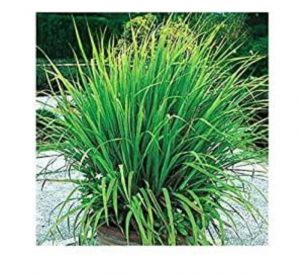Lemon Grass Biological Sources, Morphological Features, Chemical Constitution, Uses and MCQ for GPAT
Lemon Grass
Synonyms :-
East India lemongrass, Malabar, or Cochin Lemongrass.
Biological Source :-
Lemongrass oil is obtained form Cymbopogon flexuosus Stapf. (syn. Andropogonnardus var. flexuosus Hack.), belonging to family Poaceae. It contains not less than 75% of aldehydes calculated as citral.
Geographical Source :-
Lemongrass is indigenous to India and is found in Tin-nevelli, Travancore, and Cochin. Two principal varieties of Lemongrass are recognized as the red-stemmed variety, the true C. flexuosus, which is a source of East Indian Lemongrass oil and the white-stemmed variety which is designated as C. flexuosus var. albescens. The oil from the latter is low in aldehyde content and is slightly soluble in 70% alcohol.
Plant Description :-


This image is taken only for education purposehttps://en.m.wikipedia.org/wiki/Cymbopogon
- It is tropical perennial aromatic grass with stiff strap like leaves emerged from short branched rhizomes.
- It is grow in approximately 1 to 2 m height with 0.5 cm to 1 cm wide.
- It is rarely produce flowers.
- It is nodding and pinkish colour in florescence with length of 30 to 60 cm
- The pedicel is oblong linear, tinged with reddish globous grows in 6 mm to 10 mm long.
Microscopic Characteristics :-
- Large quantity of oil deposition found at the lower epidermis cell specifically the forming papillae.
Chemical Constitution :-
Monoterpenes :- Terpinolene, Limonene, Myrcene
Terpenoids :- Grenial, Neral, Citral
Phenolic Compound :- Terpinol, Geraniol, Borneol
Purity Test :-
Total Ash value :- NMT 11%
Acid Insoluble Ash value :- NMT 6%
Foreign Matter :- NMT 2%
Uses :-
- Citral used for preparation of violet perfumes.
- Mosquito repellent
- It also used in manufacturing of soaps, cosmetic and perfume.
Lemon grass MCQ for GPAT, NIPER and Pharmaceuticals competitive exams
1. Lemon Grass is belong to family
A. Myrtaceae
B. Poaceae
C. Solanaceae
D. Liliaceae
2. Which of the following is not a fruit type herb ?
A. Fennel
B. Dill
C. Lemon Grass
D. Clove
3. Which sentence is false about lemon Grass ?
A. It contains not less than 75% of aldehydes calculated as citral.
B. It is also known as malabar.
C. It is tropical perennial aromatic plant.
D. It has total ash value NMT 16%.
4. Which of the following is use of lemon Grass ?
A. It has mosquito repellent property.
B. It is used in manufacturing of cosmetic products.
C. It is also use in manufacturing of soaps.
D. All of the above
5. Which of the following is not a terpenoid ?
A. Grenial
B. Citral
C. Myrcene
D. Neral
6. Which of the following sentences is false about lemon Grass ?
A. Lemon Grass is 1 to 2 m in height.
B. Lemon Grass is 0.5 cm to 1 cm in diameter.
C. It is aromatic herb.
D. Lemon Grass is fruit type herb.
7. Which of the following is main Constitution of lemon Grass ?
A. Myrcene
B. Citral
C. Terpinol
D. Limonene
8. How many percentage foreign ash is present in lemon Grass ?
A. NMT 2%
B.NMT 5%
C.NMT 3%
D.NMT 4%
9. Match Of The Following
i Acid Insoluble Ash A 11
ii Citral. B 6
iii Foreign Matter. C 2
iv Total Ash value. D 75
A. i →B ii →C iii→ A iv→ D
B.i →B ii →C iii→ D iv→ A
C.i →B ii →D iii→ A iv→ D
D.i →D ii →C iii→ A iv→ B
10. Lemon grass has reddish colour in florescence. True or False
A. True
B. False
Answer key :-
1. B
2. C
3. D
4. D
5. C
6. D
7. B
8. A
9. C
10. B
Reference :-
16th edition of trease and evans Pharmacognosy (pg.no. 263,281)
Phytochemistry and pharmacological activities of Cymbopogon citratus: A review
https://www.sciencedirect.com/science/article/pii/S2468227619306982
This information is taken only for education purpose